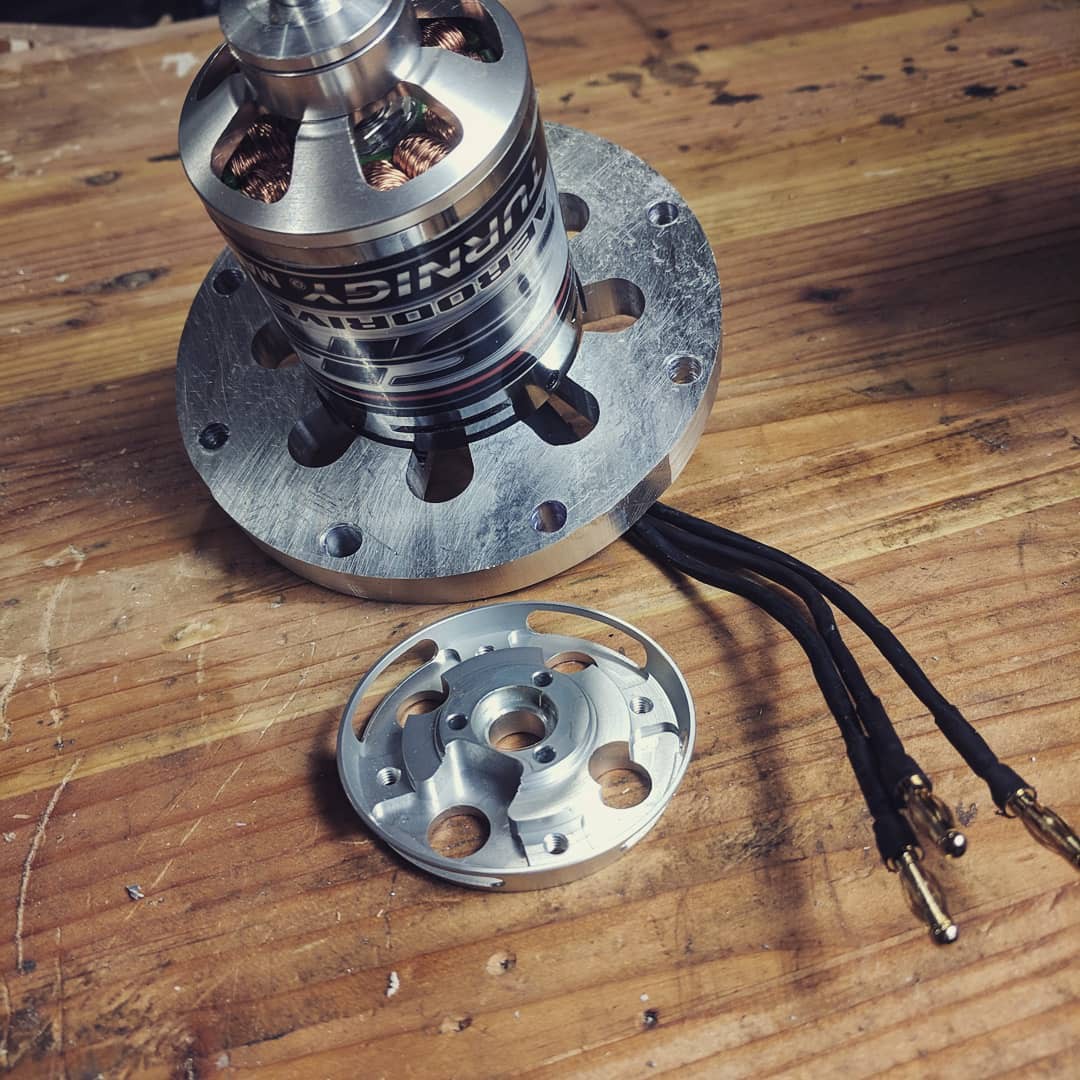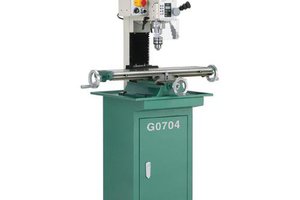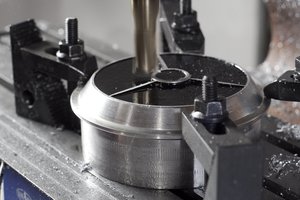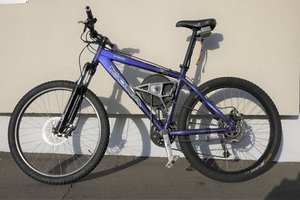Rockwell Milling Machine Rebuild
Rebuilding a Rockwell 21-122 Horizontal/Vertical Milling Machine
Rebuilding a Rockwell 21-122 Horizontal/Vertical Milling Machine
To make the experience fit your profile, pick a username and tell us what interests you.
We found and based on your interests.

Playing around with CNC! After building the housing assembly for the motor, I needed to mount the motor itself. The motor came with a small bracket, but that didn't sound like much fun. Instead, I took off the top of the motor can and replicated the features in CAD. I then milled that directly into the top housing plate with the little baby Taig CNC mill.
Everything worked remarkably well, only a few hiccups. Coolant also worked a lot better than expected. Unfortunately, an error in my program meant the air vent slots didn't get fully machined so the coolant didn't drain, making it hard to see what was happening.
I recently decided to upgrade the motor on my Rockwell mill. The existing motor is a 3/4hp induction motor and it's OK... but has a bent shaft and mismatched step pulley. I'm upgrading the motor to use a 4kW brushless hobby motor, which is roughly 5hp peak. Realistically, I expect around 1kW continuous (1-1/3hp). I chose a BLDC over VFD induction drive because A) I had the motor on hand, B) they are generally more efficient and power dense...and C) brushless motors are fun :)
In this first part I mill out the motor mounting plates and struggle to drill/tap some stainless pipe. Many broken taps and drills later I have the mount roughed out, ready to start mounting electronics.
The motor is a 192kv Turnigy Aerodrive brushless hobby BLDC. Rated for 48v and 4kW, it's max speed is ~9000 RPM according to the manufacturer. After running the numbers, it likely comes out a bit closer to 2600W and 7300 RPM.
BLDC torque is theoretically around 3.5 Nm, while the original induction motor is near 2.3 Nm. So it should, theoretically, be a bit more torque in a smaller package even after a healthy de-rating of the manufacturer specs
I recently added a digital readout to the mill. A few hiccups along the way, but overall the installation went very well. The DRO is a kit from TouchDRO. Ordered the PCB and components, soldered it up and fabricated some mounts for cheap Shars scales.
After calibration, the DRO reads +/- 1.5 thousandths of an inch, which is right about the tolerance of the scales according to the manufacturer.
Part four is up!
In this last episode, I paint all the parts and re-assemble. There is also a digression into the power-feed adapter, since I got some interest on how it was put together. Looks like someone fabricated a custom adapter to mount a Central Machinery (e.g. Harbor Freight) power-feed onto the mill.
Thanks all for watching! Time to start on "real" projects now that the mill is up and running :)
Took a bit of wrestling with the mill, but I removed the table and lead screw. Wasn't completely necessary, but it made cleaning up the table surface a lot easier. Degreased everything, evapo-rusted the surface, then lightly stoned out the burs.
Also cleaned and stripped the mill body, and got it masked up for painting. Nearly done!
Part two is up! This episode is mostly cleaning the quill fine-feed control, the head rotation mechanism, cleaning the bearings and wrestling with the pulleys.
One interesting thing I found was the worm wheel in the head rotation mechanism. This mechanism allows you to tilt the head left/right, so that you can make angled cuts. You adjust the tilt by turning a nut, which internally rotates a worm against a worm wheel.
What's interesting is that the worm wheel is made out of aluminum, while the worm gear itself is steel. The worm wheel is the piece that takes any rotational forces induced by the cutting action (assuming the force is too large for the locking bolts). So there is a chance of shearing or mangling the aluminum teeth if the head takes sufficient sideward load.
I'm unsure why Rockwell chose to make this gear aluminum... perhaps it's a sacrificial part? If something goes wrong, you'd rather destroy the worm wheel and replace, rather than the worm gear? Not sure.
In any case, I'm expecting one more video in this series; stoning the table, masking everything, priming/painting and then re-assembly. There may be a followup video with things like installing DRO, etc.
I normally just document projects with photos, but for this mill I thought it'd be fun to try my hand at video. So here's the first episode:
I give a quick tour of the machine, play around with milling some scrap metal, then start disassembling the head, spindle/quill and ram. Next episode will be mostly disassembly and cleaning: need to do the bearings, fine feed control, table, and the body itself.
Let me know what you think of the video! First time editing something like that together :)
I recently acquired this Rockwell 21-122 Horizontal/Vertical milling machine from my local Craigslist.
Create an account to leave a comment. Already have an account? Log In.
Awesome! Do you have the combo mill, or one of the single function versions? Any complaints/issues I should keep in mind as I start to use it?
Adding a digital readout (DRO) will make a huge difference in the utility of your mill. I have a Clausing mill about this size and I resisted adding a DRO for a long time. When I finally did, I became a believer!
So I recently added a DRO (set of cheap scales from Shars + TouchDRO on a tablet) and wow, it's fantastic. I don't think I'd ever be able to go back :)
Become a member to follow this project and never miss any updates
By using our website and services, you expressly agree to the placement of our performance, functionality, and advertising cookies. Learn More

 charliex
charliex
 youkito1991
youkito1991
 polyfractal
polyfractal
 Rory
Rory
I own one!